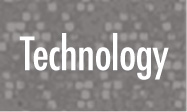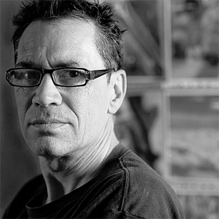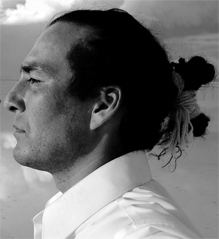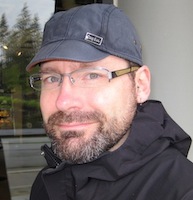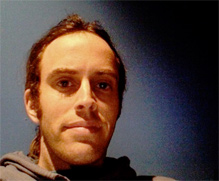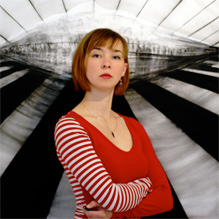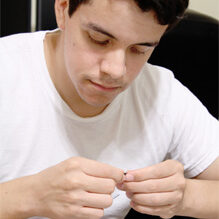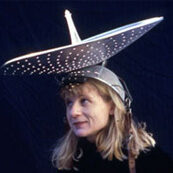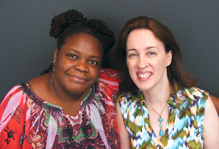Site-specific video installation and iOS app
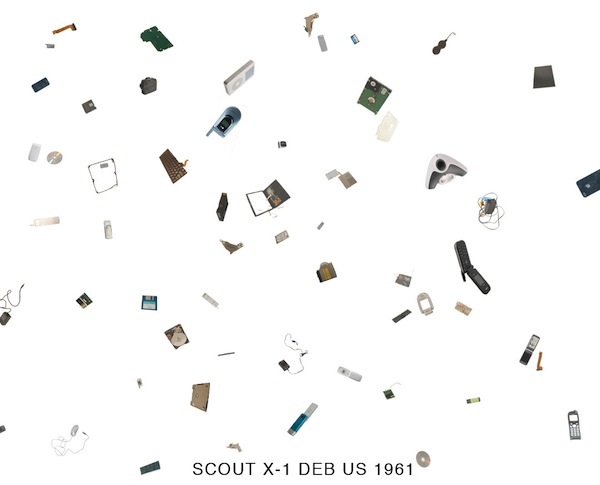
“Junkspace” is a time and location sensitive animation and corresponding mobile application that superimposes two forms of waste, one earth-bound (electronic waste) and the other celestial (orbital debris), and three different forms of space: outer space, physical space and virtual space. Using orbital debris tracking data published by NORAD and the GPS coordinates of the exhibition venue, the movement of animated e-waste on screen aligns with the orbital path of actual pieces of debris in orbit above the user’s location. Using the free “Junkspace” App, viewers can obtain more information on the original purpose of the satellite or rocket being tracked by tapping on its name. In a gallery setting, the project is presented in a variety of possible configurations, including projected onto a translucent material on a window.
Junkspace: This art piece dramatizes the effect human activity has had not only on the earth’s surface but also in outer space. Industrial processes for producing electronic devices, combined with continual advances in technologies, has resulted in a proliferation of electronic waste, obsolete pieces of equipment filling up space on the surface of the earth. Many of the devices we use on earth require communication satellites for their functionality and countries around the world are increasingly launching new satellites into space. Each new satellite produces associated debris from the launch itself (rocket bodies), from accidental explosions, and from their eventual obsolescence. There are also many pieces of orbital debris in space currently that came from the space exploration missions of the 1950’s and 1960’s. At any given time and place there are pieces of orbital debris floating high above you, orbiting the earth. This artwork imagines what this floating debris might look like if it were visible to the naked eye, using electronic gadgets that we all use here on earth to take the place of pieces of orbital debris, which we cannot see. The artists use photographs, computer programming, and data from NORAD to present a dynamic image of all the junk that humans have produced and continue to produce.
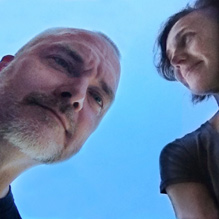
Lynn Cazabon and Neal McDonald
Lynn Cazabon and Neal McDonald are artists based in Baltimore, Maryland who collaboratively create works combining data mining, animation and photography that seek to raise awareness about pressing environmental issues. They both are on the faculty of University of Maryland, Baltimore County. They each also work independently.
Skills Applied
 DATA MINING
DATA MINING
 PROGRAMMING LANGUAGES
PROGRAMMING LANGUAGES
 SATELLITE TECHNOLOGY
SATELLITE TECHNOLOGY
 COMMUNICATION TECHNOLOGIES
COMMUNICATION TECHNOLOGIES
ARTIST SUGGESTION
The combination of media we employ in “Junkspace” is unique: it uses photography (the images of electronic gadgets were each photographed individually), animation (custom software using the computer programming languages Objective-C and OpenGL to create movement), and data mining (satellite tracking data published by NORAD, The North American Aerospace Defense Command, to dictate the movement of gadgets in Junkspace, and in the App we tap into an already existing database of information on these satellites and rockets). Students could research all the different aspects of the project: – Find out what happens to the household trash they throw away. – Find out where old cell phones, cameras, computers that are discarded in Albuquerque end up going. – Communicate with officials in space centers in New Mexico about the design of modern satellite technology, and the connection between satellites and the gadgets we use on earth. Lynn and Neal
Stemarts Design Tool
Explore the site to come up with your idea. Pick an artist or topic.
This artist is one of 20 ISEA2012 artists featured in this curriculum. Explore them all to see which you would like to use as a model for your project. It could be a combination of different artists and topics that inspire the work. Print out the STEMArts Design Tool which outlines these steps and use it as a guideline in your process. Visit the Wiki-Resource on each artist page to see tutorials, activity ideas, read articles about the medium that the artists explored and other resources to help you find something that peaks your interest. Click on the Artist Interview button on each page to read a personal interview with each artist. The artist was asked questions to share their creative process, talk about the medium they work with, and to share tips and advice for you as you begin your design process. In this phase, you are looking for inspiration for an project that is meaningful to you. Get a journal and start sketching and writing notes on your process.
Brainstorm and come up with ideas for your art piece.
In this phase, you will need to sketch, doodle, contemplate, or journal, in order to start allowing ideas to formulate. Search the Wiki-Resource under keyword “brainstorming” to explore some techniques and articles. The artists in the Artists Interviews also share their personal brainstorming techniques. Read through all these resources and do some research yourself. Then set aside some daydreaming time and get started. Think big and let all the ideas you have hit the page without editing them. Get in the flow and write or draw in a journal any ideas you come up with that you would like to explore further.
How are you going to turn the idea into a reality? Research.
Brainstorming and researching go hand in hand. You will be going back and forth between the two until you come up with a plan. Once you brainstorm some great ideas for an art piece you will need to research to learn more about the topic or medium. In turn, that leads to more brainstorming. How are you going to turn the idea into a reality? What materials do you need? Can you build it yourself or will you need help? In your journal make a list of any questions or concerns that come to mind. Search the Wiki-Resource under the keyword “research tips” for ideas, and explore on your own to find the answers to your questions. If you need to collaborate on this piece, decide who that will be and make plans to work together.
Start your design plan.
You have everything you need now to start creating. Refer to your journal to review your process up until now. Review the STEMArts Design Tool. Research online if you still have a question about anything. Ask your teacher for help. Now, it´s time to make a materials list and sketch out your plan of action. Or perhaps you prefer to dig in and start building something? There are many ways to approach it and every artists has their own style. Each artist shared their own design approach in the interviews. Look back over them and see which approach suits your style. Start creating!
See how it works, test and re-test until you get what you want.
The design process always involves testing out your ideas in the real world, and building prototypes to see if it works. You also may find that once you start building it, it is not what you had in mind. This is part of the process. It helps to document everything you do in your journal. This is the hardest stage because it is easy to get discouraged. Read about what the ISEA2012 artists say about this phase. Ask for help when you need it. If you get stuck, go back to the brainstorming phase for new ideas. Get feedback from your teacher, your friends, and experts. We created a Troubleshooting Guide to help you evaluate and critique your work in case you are stuck on your design.
Practice presenting in order to get feedback for your finished piece.
You have probably explored options for presenting your work but this is the time to work out the details. Your venue will often determine the presentation format. Now is a good time to present your work to friends and peers to get some feedback. Our Feedback Survey poses questions that will help you critique your own work, and provides tips on receiving constructive feedback from others. It will also help to look back on your design process to see if you are where you want to be with your art piece.
Bringing it all together. Time to share it.
Sharing your work can be scary and thrilling at the same time. Hear what artists have to say about the importance of sharing their work with the public. Do you want to share it in your community? Is there a venue interested in what you have created? Will you use Vimeo, YouTube, a blog? Search under keyword “Share tools” in the Wiki-Resource for some links and ideas.
STEMarts Wiki
Search this open source wiki for links to learn more about the type of art, medium and STEM topics explored in the “Junkspace” project. We suggest starting with Pyramids of Waste aka the Lightbulb conspiracy which will help you explore the ideas around e-waste that inspired “Junkspace.”
You will also find links to articles, images, video, tutorials and more to provide a starting point for your research in creating an art piece or project inspired by the “Junkspace” project. If you have find anything interesting on your own, please consider sharing it in this open forum.
Remember the resource is an open forum sharing links and ideas that others have found – always check your sources and give credit where credit is due. The open source movement generously shares its knowledge and relies on users and sharers feedback – so if there’s something really good or doesn’t work let others know.
Climate Science Coding Data Mining Data Sets Data Visualization Design E-Sculptures E-Waste Electronics Environmental Art GPS Hacking Human Activity Impact Interactive Art Life Cycle Approach Mathematics Modding Navigation Patterns Planned Obsolescence Programming Programming Technology Real Time Data Social Media Sustainable Sustainable Designs Technology Tracking Data Upcycling VIEW ALL Waste Wearables
NEXT GENERATION SCIENCE STANDARDS
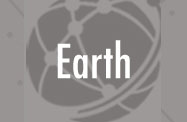
Core Idea ESS3: Earth and Human Activity
ESS3.A: Natural Resources
ESS3.B: Natural Hazards
ESS3.C: Human Impacts on Earth Systems
ESS3.D: Global Climate Change

